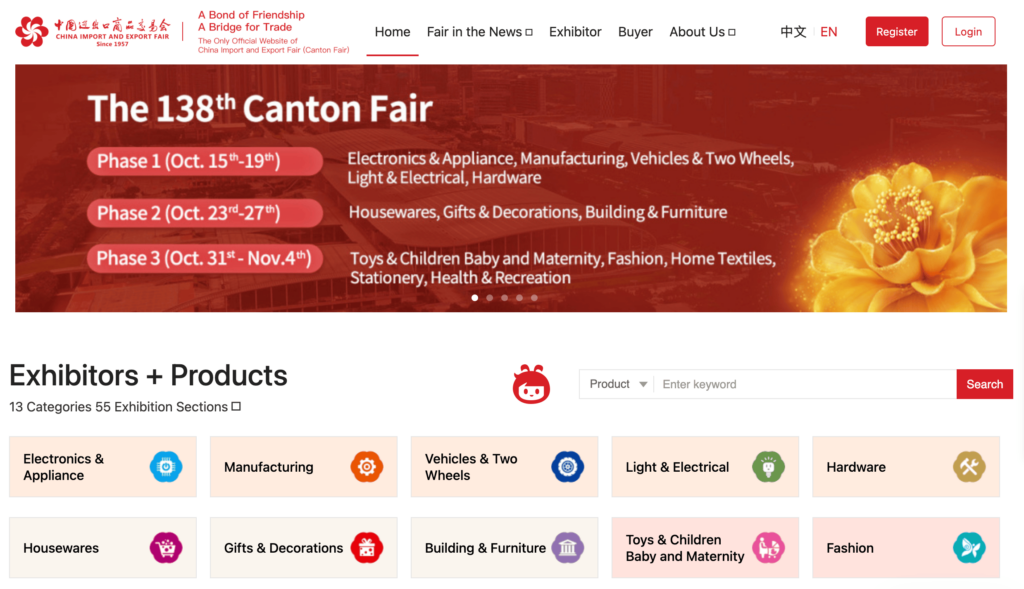How to get vendors for an ecommerce website: 11 proven strategies that work

To get vendors for your ecommerce website, you need to identify potential partners through targeted research, reach out with a compelling value proposition, and build systems that make joining your platform attractive and profitable for sellers.
Here’s what you need to do:
- Start by understanding exactly what kind of vendors you want.
- Identify potential vendors through targeted research and networking.
- Focus on building relationships instead of just collecting contact information.
- Make it easy for them to say yes by showing clear value from day one.
This guide shows you how to stand out by finding the right vendors, crafting pitches that get responses, and building lasting partnerships.
You’ll learn where to find reliable vendors, what they really care about when choosing partners, and how to make your online marketplace the obvious choice.
Ready to build a vendor network that grows your online store? Let’s get started.
What is a marketplace vendor?
A marketplace vendor is any business or individual who sells products on your platform while controlling their own inventory, pricing, and listings.
Amazon sellers, Etsy shop owners, and eBay merchants are all marketplace vendors, as they use another platform to reach customers.

Think of vendors as business partners, not just suppliers. They handle their own stock, set their prices, and manage their listings, while you provide the platform, customer traffic, and payment processing.
Instead of buying products from them to resell, you’re giving them space to run their own store within your ecommerce website. For marketplace owners, this means lower inventory risk and more diverse product offers without the upfront costs of buying stock.
The best vendors bring expertise, established customer relationships, and often their own marketing efforts that help your entire marketplace grow.
With these benefits in mind, it’s clear why finding the right vendors matters so much. Bad vendors can hurt your reputation, but great ones can turn your marketplace into the go-to destination for your niche.

How to find quality vendors for your marketplace
Before you start contacting potential vendors, you need to be clear on what you’re actually looking for.
Are you prioritizing competitive prices (under $20 wholesale), premium quality (handcrafted materials), fast shipping (2-day delivery), or exceptional customer service?
Your requirements will guide your entire search, so don’t rush the selection process just because you’re eager to add products to your online store.
Check their customer reviews, research how long they’ve been in business, and compare pricing and terms to ensure you’re building long-term partnerships.
Here’s how to find these quality vendors.
Identify and target niche vendor communities
To find niche vendors for your marketplace, focus on industry-specific trade shows, supplier directories, and professional networking groups where sellers in your niche are already active.
The key is targeting communities that match your marketplace’s focus. For example, a handmade goods platform requires different vendor communities than a tech accessories or home improvement marketplace.
Here are the three most effective places to start your search:
Online directories
Start with online directories that cater to your specific industry. These sites often have communities where serious vendors share knowledge, discuss trends, and look for new opportunities.
Popular directories include Thomasnet for industrial products and Maker’s Row for US-based manufacturers.
Search for “your niche ecommerce suppliers” or “your niche wholesale directory” to find more specific options for your target market.

Offline events
Don’t overlook offline events either. Trade shows, expos, and industry conferences are goldmines for finding vendors who invest in growth and networking, exactly the type of partners you want.
Check out major events like the Canton Fair for international suppliers or CES for tech products. Use industry association websites to find relevant events in your area or niche.

Social media groups
Social media groups offer another direct line to potential vendors. Look for Facebook groups, LinkedIn communities, and even Reddit forums focused on your niche. Active group members are often business owners looking for new suppliers or seeking new distribution channels.
Join groups and build relationships by commenting on discussions, sharing helpful resources, and answering questions. This makes people more likely to consider partnerships when you mention your online marketplace.
Partner with existing online and offline networks
To find vendors through existing networks, connect with industry associations, local manufacturers, and business networking groups that already have relationships with potential sellers.
Here are three types of networks that consistently produce quality vendor partnerships:
Industry-specific groups
Industry associations and trade organizations maintain directories of their members and often facilitate business connections. Many of these groups host networking events specifically designed to connect buyers and sellers and feature overseas suppliers as well.
Start by identifying the leading trade associations in your industry, then explore their member directories and upcoming events.
Don’t be afraid to contact association coordinators and explain what you’re building. They’re often happy to help members find new sales channels.
Local manufacturers
Local businesses and manufacturers often haven’t started selling online yet, but they have quality products and established operations. They might be looking for digital partners to help them reach new customers without the complexity of building their own ecommerce presence.
Contact local manufacturing associations or use directories like MFG to find manufacturers in your area. Then, approach them with clear benefits, like the number of customers they can reach without their own ecommerce store or doing online marketing.
Local networking events
Local business meetups, chamber of commerce events, and entrepreneur gatherings are full of people running small businesses who might be perfect marketplace vendors. These face-to-face connections often lead to stronger partnerships than cold outreach.
Use Meetup.com, Eventbrite, or your local chamber of commerce website to find relevant business networking events in your area.

Explore wholesale or supplier platforms
To find vendors on wholesale platforms, start with established marketplaces where suppliers actively seek new partners to sell wholesale products.
Wholesale platforms are designed specifically for connecting suppliers with retailers, which makes them perfect hunting grounds for marketplace vendors.
Why wholesale platforms work so well
Suppliers on these platforms have established supply chains and reliable fulfillment processes, which means fewer headaches for you as a marketplace owner.
They understand wholesale pricing, bulk orders, and business-to-business relationships. Many are also experienced with dropshipping and can handle the logistics that smaller vendors might struggle with.
Plus, they’re used to working with multiple retail partners, so they understand marketplace dynamics like commission structures, shared customer service responsibilities, and coordinating with platform policies.
This experience means less time explaining how your marketplace works and faster onboarding.
Popular wholesale platforms to explore
Start with major platforms like Alibaba for international suppliers, Wholesale Central for US-based vendors, and Faire for boutique and artisan wholesale products.
Each platform caters to different types of suppliers and price points, so explore multiple options to find vendors that match your marketplace’s focus.

How to approach wholesale suppliers
When reaching out to wholesale suppliers, focus on your marketplace’s growth plans and target customer base rather than just asking them to list products.
Send personalized messages that show you’ve actually looked at what they sell. For example, mention how their kitchen gadgets would appeal to your home cooking enthusiasts or how their outdoor gear fits your adventure sports audience.
Explain how partnering with your platform can help them reach new customers without the marketing costs they’d face selling direct-to-consumer, especially as your marketplace grows and attracts more buyers in their niche.
Offer pilot programs
To attract hesitant vendors, create pilot programs that let them test your marketplace with reduced fees or simplified requirements before committing to a full partnership.
Many quality vendors are already established on other platforms and might be reluctant to invest time and resources into yet another marketplace.
Pilot programs remove this barrier by offering a low-risk way for them to evaluate your platform’s potential without significant upfront commitments.
Why pilot programs work
Pilot programs address the primary concern most vendors have: Is this platform worth my time?
Instead of asking them to fully commit based on promises, you’re letting them see real results with their own products. This builds trust and gives both sides a chance to work out any operational issues before scaling up.
How to structure your pilot program
Offer reduced commission rates for the first 30-60 days (for example, 5% instead of your standard 10%), waived listing fees, or simpler onboarding requirements like accepting basic product photos instead of requiring professional shots.
You might also provide extra marketing support during the pilot phase, like featuring their products in your homepage banner, including them in your welcome email to new customers, or highlighting them in your monthly newsletter.
Other pilot incentives could include priority customer support, dedicated account management, or early access to new platform features.
Set clear success metrics upfront so both you and the vendor know what constitutes a successful pilot. This might include specific sales targets, maintaining a customer rating above 4.5 stars, or simply completing the full pilot period without major customer service issues.
Making the transition to full partnership
Schedule the review meeting 1-2 weeks before the pilot ends to allow time for decision-making. Show them their sales data, customer feedback, and traffic analytics, and discuss moving to standard terms.
Vendors who see positive results during the pilot are much more likely to commit long-term and even refer other quality sellers to your platform.
How to attract sellers to your marketplace
To attract sellers to your marketplace, you need to show them clear value through better terms, marketing help, and growth opportunities that beat what they’re getting from their current platform.
The best vendors have options. They’re already selling somewhere else, getting decent results, and probably receiving partnership offers regularly.
Your job is to show them something better, whether that’s access to customers they can’t reach elsewhere, better terms than their current platform, or support that makes their business easier to run.
This means you need to go beyond just listing your marketplace features and focus on what sellers actually care about: more sales, less hassle, and growth opportunities they can’t get anywhere else.
Perfect your vendor pitch
To craft the perfect way to pitch potential vendors, focus on their business goals and pain points rather than just describing your marketplace features.
Most vendor pitches fail because they list platform features, mention great opportunities, and ask vendors to join their growing marketplace. The problem is that vendors hear this same pitch dozens of times every month.
Here’s how you can stand out:
Start with research
Before reaching out, spend 10 minutes researching each vendor. Look at their current selling platforms, product range, and customer reviews. Check their social media to understand their brand voice and target audience.
Use tools like SimilarWeb to check their traffic sources or Ahrefs to see their keyword rankings.
Look specifically for:
- Product pricing and profit margins.
- Customer complaints or common issues.
- Social media posting frequency and engagement.
This research helps you personalize your pitch and shows you’ve done your homework.
Address their biggest concerns upfront
Most vendors worry about time investment, customer quality, and whether your platform will actually drive sales.
Address these directly by explaining that your streamlined onboarding process takes little time, and that you can help with customer service for the first 30 days while they get settled.
Handle common concerns like “What if your platform doesn’t work out?” by offering pilot programs or performance guarantees that let them test your marketplace without significant risk.
Lead with benefits, not features
Instead of talking about your low commission rates, explain how they’ll keep more profit on each sale with your 8% commission versus the 12% they’re paying elsewhere.
Rather than mentioning your marketing tools, focus on how your built-in email system can help them reach your visitors interested in their product category.
Include social proof
Mention similar vendors who are succeeding on your platform, but keep it brief and relevant.
Mentioning that Sarah’s jewelry store saw a 40% increase in monthly sales within 60 days works better than vague claims about successful vendors.
Build long-term partnerships
To build long-term vendor relationships, focus on creating partnerships that become more valuable for both sides over time rather than treating vendors as one-time acquisitions.
This means thinking beyond the initial signup and considering how you can help vendors succeed long-term while they help your platform grow.
Start with trust-building actions
Follow through on every promise you make during the pitch process. If you said you’d feature their products in your newsletter, do it. If you promised to provide sales data within the first week, deliver it early.
Small actions like these build the foundation for long-term working relationships.
Create tiered partnership levels
Offer different partnership tiers based on performance or commitment levels. Your top-performing vendors might get reduced commission rates, priority customer support, or exclusive marketing opportunities.
This gives vendors something to work toward and rewards loyalty.
Regular check-ins and feedback
Schedule monthly calls with top-earning vendors and quarterly calls with smaller sellers to discuss their performance, address concerns, and gather feedback about your platform.
These conversations often reveal opportunities for improvement and show vendors that you’re invested in their success.
Invest in their growth
Actively help your best vendors expand their business on your platform. This might mean sharing customer demographics, introducing them to packaging suppliers, or providing free product photography.
You could also provide market research, connect them with complementary vendors, or offer training on marketplace best practices. When your vendors grow, your platform grows too.
Offer marketing support
To attract quality vendors, offer marketing assistance that helps them reach more customers without the costs and complexity of doing it themselves.
Most vendors, especially smaller ones, struggle with marketing. They have great products but limited time, budget, or expertise to promote them effectively. By offering marketing support, you solve a real problem while making your marketplace more attractive than competitors.
Here’s what you can do:
Social media
Feature vendor products on your marketplace’s social media communities and accounts. Create Instagram posts with styled product photos, share TikTok videos showing products in use, or post Facebook stories highlighting customer unboxing experiences.
You can also create themed posts or seasonal collections featuring multiple vendors’ products together.
Email marketing
Include vendor products in your regular email newsletters with dedicated sections like Staff Picks or New This Week.
Segment customers by purchase category and send monthly product recommendations. For example, email customers who bought kitchen gadgets to let them know about a new vendor’s cooking accessories, or follow up with plant buyers about a new vendor’s ceramic planters.
You could also create an automated welcome series that introduces new subscribers to your top vendors.
Search engine optimization (SEO)
Help vendors optimize their product listings by researching keywords and incorporating them into titles and descriptions. Use tools like Google Keyword Planner to find relevant keywords.
Write compelling meta descriptions, optimize product images with descriptive file names, and create category pages that help vendors’ products rank higher.
Better ecommerce SEO helps both individual vendors and your entire marketplace rank higher in search results.
Content marketing
Invite vendors to write guest blog posts offering tips related to their industry. Feature them in video interviews, create Day in the Life content showing their production process, or include their tips in downloadable guides.
This type of ecommerce marketing builds their authority while providing valuable content for your audience.
Communicate your commission structure
To build trust with potential vendors, be completely transparent about your commission rates, fees, and payment terms from the very first conversation.
Nothing damages vendor relationships faster than surprises about money. Hidden fees, unclear commission structures, or delayed payments will make even interested vendors walk away.
Here’s what you should do:
Lead with your commission rate
State your commission percentage clearly in your initial outreach and marketing materials.
Don’t make vendors dig through fine print or ask multiple questions to understand what they’ll actually earn from each sale.
Explain all fees upfront
Beyond commission, list any other costs, such as listing fees, payment processing charges, or subscription costs. Clear communication prevents misunderstandings later.
Detail your payment schedule
Explain exactly when and how vendors get paid. Do you pay weekly, bi-weekly, or monthly? Is there a holding period for new vendors? What payment methods do you offer?
Compare to competitors honestly
Research several competitor platforms and prepare talking points about your value differences.
If your rates are higher than competitors, explain the extra value you provide. If they’re lower, mention it, but focus on the quality of service rather than just price.
Vendors want to understand why your commission structure makes sense for their business.
Put it in writing
Create a one-page fee summary sheet that vendors can share with their teams, along with a clear terms of service page and vendor agreement that outlines all costs, payment schedules, and policies.
Make sure vendors can easily find and download these documents so they can review details with their business partners or accountants.
Provide logistics and customer support
By offering logistics and customer support systems, you make your marketplace more attractive to vendors while creating a better ecommerce customer experience for buyers.
Most sellers can handle these operational tasks themselves, but when they can focus more on their products, everyone benefits.
Here’s what you can do:
Handle customer service inquiries
Offer to manage customer questions, complaints, and support tickets for vendor products.
Create vendor product guides and FAQ documents to train your support team efficiently, or set up chatbots with vendor-specific information. This frees vendors to focus on what they do best while ensuring consistent customer service quality across your platform.
Manage returns and refunds
Create clear return policies and handle the entire process from customer requests to vendor communication.
When customers want to return items, they contact you instead of hunting down individual vendors. You process the return, communicate with the vendor, and handle any refunds or exchanges.
Coordinate shipping and fulfillment
Help vendors streamline their shipping processes by negotiating better prices with carriers, providing shipping labels, or even offering fulfillment services.
Some marketplaces store vendor inventory and handle all packaging and shipping, while others simply provide discounted shipping rates and automated label printing.
Provide performance analytics
Give vendors detailed insights into their sales, customer behavior, and product performance.
Providing clear reports on what’s selling, who’s buying, and when peak sales occur, like showing them that their products sell 40% better on weekends, helps them make better business decisions.
Understand vendor needs
To create successful partnerships, invest time upfront to understand what each vendor actually needs from your marketplace rather than assuming all sellers want the same things.
Vendor needs are much like customer expectations – they need to be handled with care. Different vendors have different priorities, challenges, and business goals. A handmade jewelry maker has completely different needs than a tech accessory dropshipper or an established clothing brand.
The more you understand these differences, the better you can tailor your approach and services to each vendor type.
Ask the right questions during onboarding
During your initial conversations, ask vendors about their current challenges, sales goals, and what they need most from a marketplace partner.
Questions like these can reveal valuable insights:
- What features are you missing from other ecommerce platforms you’ve used?
- What would need to happen for this partnership to be a success for you?
- How much time do you currently spend on customer service each week?
- What marketing channels work best for your products?
- How much inventory do you have?
- Do you handle your own shipping or use a fulfillment service?
Segment vendors by business type and needs
Group your vendors into categories based on their business model, size, or industry. Create segments like New Sellers (under 6 months), Growth Stage (6-24 months), and Established (2+ years).
New entrepreneurs might need more hand-holding and educational resources, while established brands might prioritize advanced analytics and marketing tools.
Create customized onboarding experiences
Tailor your onboarding process based on what you learn about each vendor. Create different onboarding checklists, resource libraries, and support channels for each vendor type.
A dropshipper might need help with automated inventory management, while a local artisan might need guidance on photography and product descriptions.
Customized experiences show vendors you understand their specific situation.
Collect regular feedback
Set up systems to regularly collect feedback from your vendors about what’s working and what isn’t.
This can be quarterly surveys, monthly check-in calls with top performers, or simply monitoring which support requests come up most often. Share quarterly updates with vendors about platform improvements based on their feedback.
Why vendor experience matters
Vendor experience matters because happy vendors stay longer, sell more, and refer others to your platform, directly impacting your marketplace’s overall success.
When vendors have a positive experience on your marketplace, they’re more likely to add new products, improve their listings, and actively promote your platform to their customers.
This creates a cycle where good vendor experiences ultimately attract more quality vendors.
Retention is cheaper than acquisition
Finding and onboarding new vendors requires significant time and resources. It’s much more cost-effective to keep existing vendors happy and growing their business on your platform.
Vendors who stick around for months or years also tend to become your highest revenue generators as they optimize their listings and build customer loyalty.
Quality vendors attract quality customers
Vendors who feel supported and valued provide better customer service, higher-quality products, and more professional listings.
This elevates your entire marketplace’s reputation and attracts customers who are willing to spend more and return for repeat purchases.
Word-of-mouth referrals
Satisfied vendors become your best marketing channel. They recommend your platform to other sellers in their networks, speak positively about your marketplace at trade shows and industry events, and may even feature your partnership in their own marketing materials.
These referrals typically bring higher-quality vendors than cold outreach.
Better vendor experience means better customer experience
When vendors are happy with your tools, support, and processes, they can focus on serving customers instead of fighting with platform limitations.
This results in faster shipping, better product descriptions, more responsive customer service, and overall higher satisfaction for buyers that goes far beyond just affordable prices.
Next steps for your vendor strategy
Now that you understand how to find suppliers and attract vendors, it’s time to implement these strategies and create an approach to building your vendor network.
Start by choosing 2-3 vendor acquisition methods that best suit your marketplace’s niche and available resources. Trying to implement everything at once will spread you too thin and reduce your effectiveness in each channel.
Create your vendor acquisition plan
Set specific goals for the number of vendors you want to onboard each month and the types of vendors you’re prioritizing.
Map out your outreach process, from initial research to follow-up sequences, so you can track what’s working and refine your approach over time.
Build your vendor support systems
Before actively recruiting vendors, make sure you have the operational systems in place to deliver on your promises. This includes onboarding checklists, vendor communication templates, and payment processing workflows, plus any marketing support you plan to offer.
It’s better to start with fewer vendors who have a great experience than many vendors who feel unsupported.
Track and measure your results
Monitor key metrics, such as vendor response rates, time from outreach to onboarding, vendor satisfaction scores, and vendor retention rates.
These numbers will help you identify which acquisition strategies work best and where you need to improve your vendor experience.
Scale your successful approaches
Once you’ve identified what works, double down on those channels. This might mean attending more trade shows, expanding your social media outreach, or hiring someone dedicated to vendor outreach.
As your online store grows, you’ll need to learn how to scale an ecommerce business to keep up with demand and maintain a healthy balance of vendors and buyers.
Remember, building a strong vendor network takes time, but the effort you put in during the early stages will pay off as you attract even better vendors.
All of the tutorial content on this website is subject to Hostinger's rigorous editorial standards and values.




